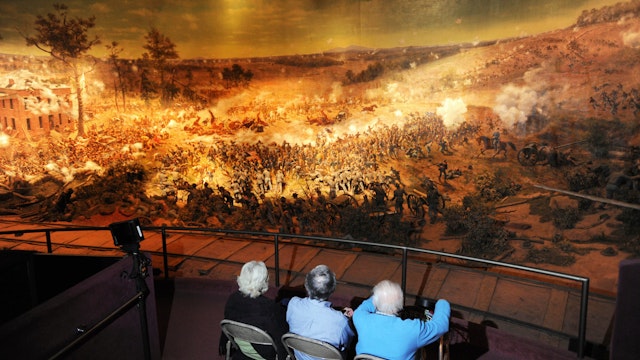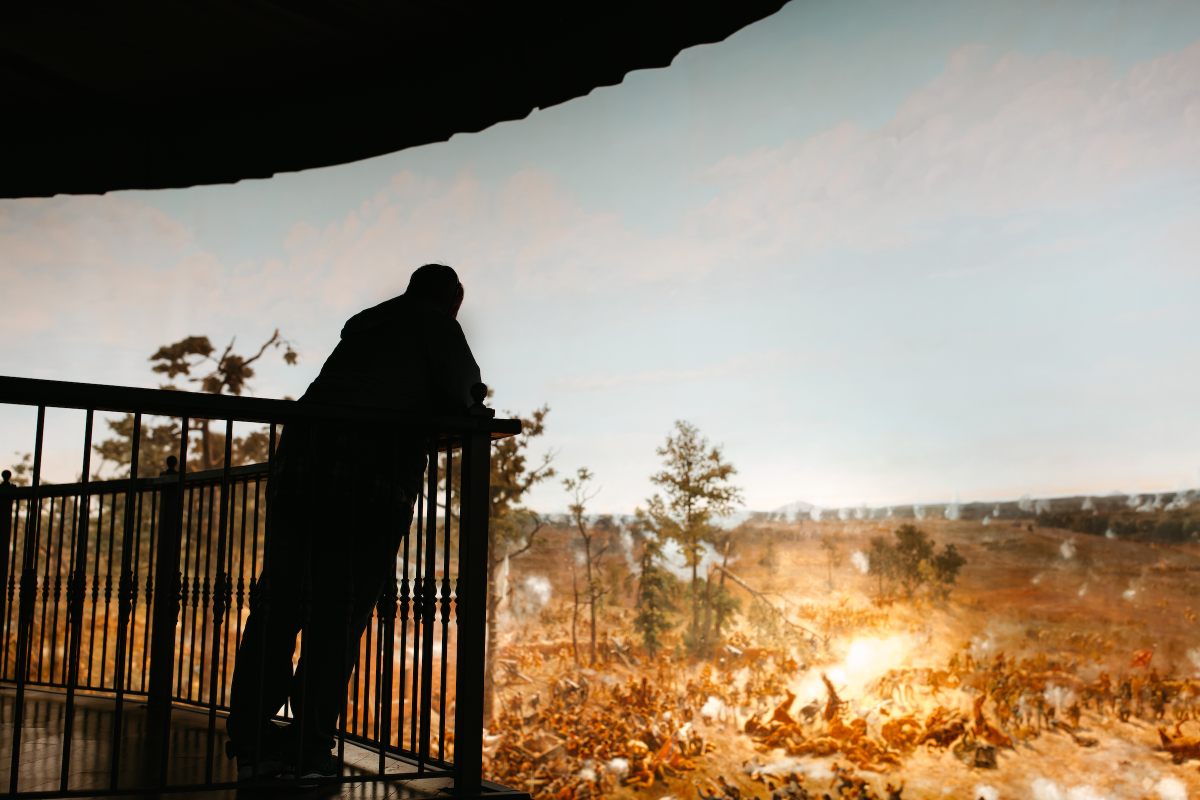Cyclorama - precursors of film and movie
A Cyclorama is a large, cylindrical painting that surrounds the viewer, creating the illusion of being in the scene depicted in the painting. They were popular in the late 19th and early 20th centuries as a form of entertainment and education, often depicting historical events or landscapes. They were often displayed in specially-built buildings called Cyclorama buildings.
Cycloramas were precursors to film and movies in that they used similar techniques to create the illusion of movement and depth. However, unlike film and movies, Cycloramas were static images that the viewer would physically move around to experience different parts of the painting. They were also typically much larger in scale than film or movies, with some Cycloramas measuring up to 100 feet in diameter.
Despite their popularity in the past, Cycloramas have largely been replaced by film and movies as a form of entertainment and education. Today, there are only a few remaining Cycloramas in the world, and they are considered to be historical artifacts rather than a form of popular entertainment.
In addition to being a form of entertainment and education, Cycloramas were also used for military training. Military Cycloramas were large-scale paintings that depicted battlefields and were used to train soldiers on the terrain and tactics of a particular battle. These Cycloramas were often accompanied by dioramas, which were small-scale models of the battlefield, and were used to supplement the information provided by the Cyclorama painting.
Some Cycloramas were also used for advertising, particularly in the form of panoramic advertisements. These were large-scale paintings that depicted a product or company in a favorable light, and were often displayed in public spaces such as train stations or department stores.
Ben-Hur Cyclorama.
Next will be a note about the most famous such cyclorama.Ben-Hur, a 1899 play, featured a live chariot race using real horses and chariots set against a cyclorama. The horses were secured by invisible steel cable traces and ran on treadmills, while the chariot wheels were spun by electric rubber rollers. A vast cyclorama revolved in the opposite direction to create the illusion of speed, and dust was created by fans. Critics called it "a marvel of stage-illusion" and "thrilling and realistic." This scene went on to inspire the multi-Oscar-winning 1959 film adaptation of Ben Hur, starring Charlton Heston.







Comments
Post a Comment